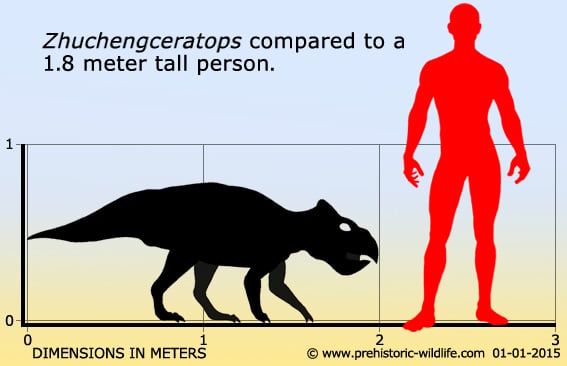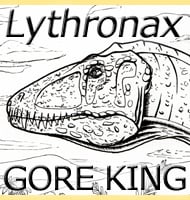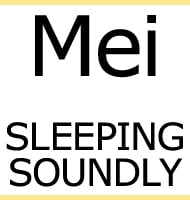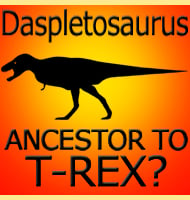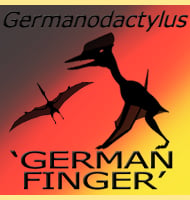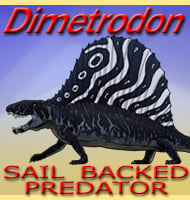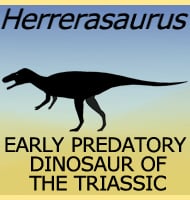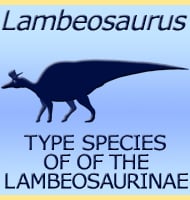In Depth
Zhuchengceratops was on the larger average size for known leptoceratopsid dinosaurs, and one of the most impressive features were the mandibles (lower jaw bones), which at fifty centimetres long and eighteen centimetres deep at the mid-point, were simply huge for a dinosaur of this size. These mandibles were about one and a half centimetres wide along the bottom (ventral) edge, and five centimetres wide along the top (dorsal) edge, meaning that they were well suited to provide strong support for the teeth of the cheek. These teeth processed what was presumably tough food that had been snipped off from a plant by the beak like anterior portion of the mouth, hence the necessity for such a robust jaw.
In some respects Zhuchengceratops is similar to other leptoceratopsids such as Leptoceratops and Udanoceratops due to the facts the jaw of Zhuchengceratops articulates above the top of the dentary teeth, and the lower edge of the maxilla bows out in a convex manner. Zhuchengceratops however also has a number of morphological features that were unknown in previously studied genera. This indicates that as a group the leptoceratopsids continued to adapt and diversify during the late Cretaceous, and were not merely the basal forms of the more famous quadrupedal ceratopsian dinosaurs.
Being discovered in the Wangshi Group, Zhuchengceratops likely shared its habitat with the ceratopsian Sinoceratops, the hadrosaurs Tanius, Shantungosaurus and Tsintaosaurus and the ankylosaur Pinacosaurus amongst others. Predatory threats may have come from dinosaurs like Zhuchengtyrannus.
Further Reading
- A New Leptoceratopsid (Ornithischia: Ceratopsia) from the Upper Cretaceous of Shandong, China and Its Implications for Neoceratopsian Evolution, Xing Xu, Kebai Wang, Xijin Zhao, Corwin Sullivan & Shuqing Chen - 2010.
